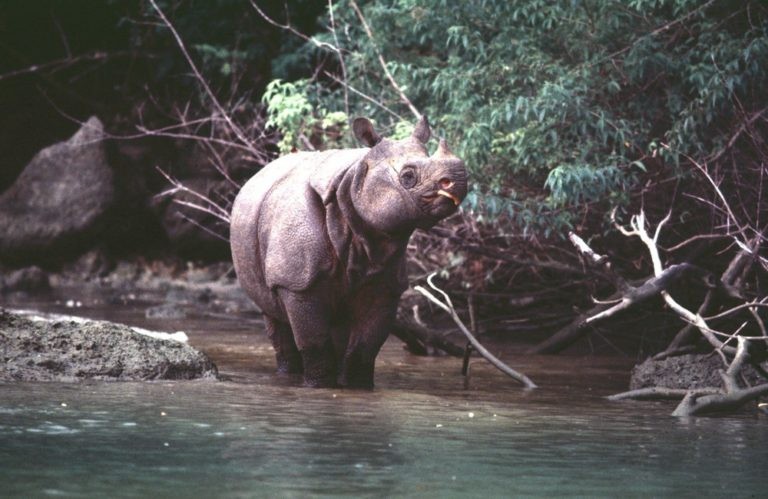A rare sighting of two Javan rhinoceros calves was recently reported in Ujung Kulon, an Indonesian national park which is also the only wild habitat left for the endangered species. Helen (female) and Luther (male) were spotted with their mother via video footage.
According to the World Wildlife Fund (WWF), Javan rhinos are one of five threatened rhino species. Local authorities shared that the additional two new calves mean that there are only about 74 Javan rhinos left.
The rhinos used to live in northeastern regions of India all way to Southeast Asia in countries like Cambodia, Thailand, and Indonesia. One of the major factors for their population decline is illegal poaching.
In Cat Tien National Park, Vietnam, the last Javan Rhino was poached in 2010, reported the WWF. The species was declared extinct in all other countries except Java, Indonesia, where the last of the Javan rhinos remain.
Threats to Javan Rhino Populations
Similar to other rhinos, poaching the animals to remove its horn has escalated in recent years. Typically, a tranquilizer gun is used to put down the rhino then its horn is removed. The rhinos would then be left to bleed to death slowly.
In Asia, Vietnam is one of the highest consumers of Rhino horns due to ancient medicinal practices such as a hangover cure, for gout, and stroke. It is also a status symbol and used to honor relatives with a terminal sickness, as reported by researchers from the University of Copenhagen. The study also noted that nearly 1,100 rhinos were killed by poachers in 2017 to meet these demands.
Unlike other rhino species, the Javan rhino only has one horn that grows to about seven inches. They are typically found in tropical areas and live near sources of water. Ujung Kulon is the last tropical rainforest habitat that is home to the remaining Javan rhinos, made up of about 12,600 acres with freshwater streams.
Aside from poaching, other major threats to the rhino population include habitat loss for urban developments and agricultural land. Decreased numbers are also associated with interbreeding and lack of biodiversity.
The local government has one additional concern for the rare species. Mount Krakatau is an active volcano near the national park. But so far, there are no signs of the volcano erupting any time soon.
READ: Northern White Rhinos Are Facing the Threat of Extinction But Researchers Offer Good News

Saving the Javan Rhinos
In July, Environment Minister Siti Nurbaya Bakar shared a video of one of the male Javan rhinos playing in a puddle. Bakar shared that the rhino is probably seven years old. He was playing in the puddle to maintain body temperature and humidity, she shared.
Wiratno, the Director-General of Nature Conservation and Ecosystems at the Indonesian Ministry of Environment and Forestry, shared that the birth of Helen and Luther "bring a big hope for the continuation of the life of the critically endangered special Javan rhino."
According to the wildlife organization Save the Rhino International, the current population in Ujung Kulon, "active translocation and establishment of new populations in suitable and secure habitats" could mean that within 150 years, the species can recover and have an increased population of 2,000 Javan rhinos.
READ MORE: WWF Reports 'Catastrophic Decline' of Global Wildlife Population
Check out more news and information on Endangered Species on Science Times.
© 2025 ScienceTimes.com All rights reserved. Do not reproduce without permission. The window to the world of Science Times.












